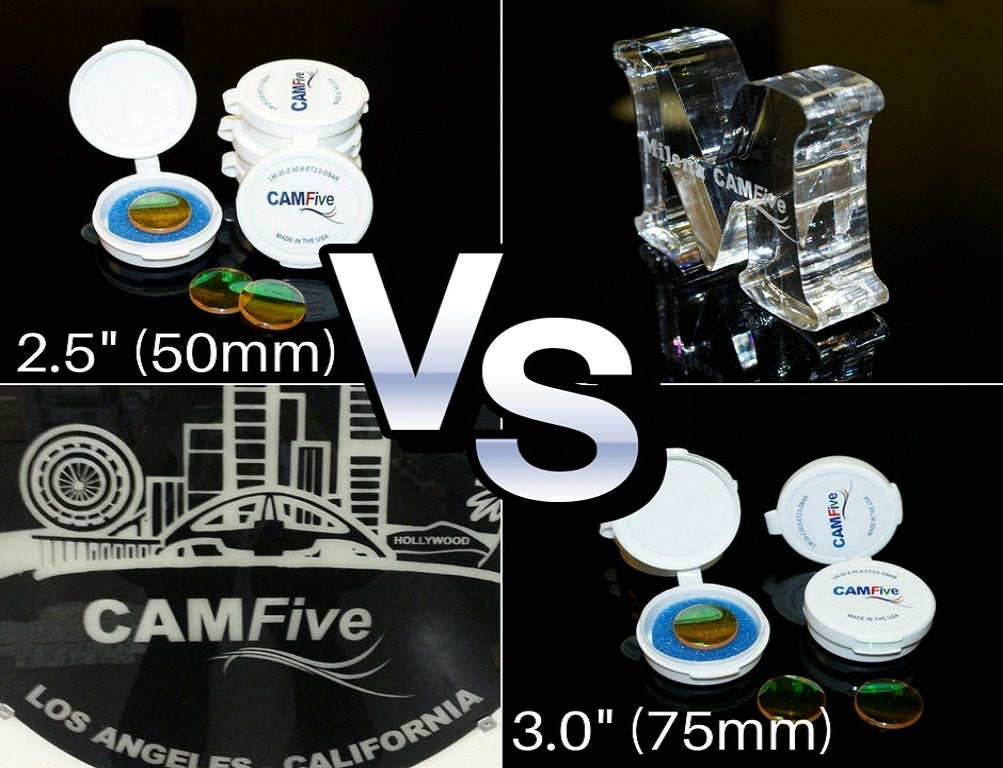
Even though Laser machines are versatile and can work on a wide variety of materials and surfaces, sometimes the extra help of a different lens can make a difference between a “good enough job” and an amazing job. There are several types of lenses with similar results in some materials but we will only compare the 2” FL (Focal Length) also known as 50mm vs. the 3” FL (Focal Length) also known as a 75mm.
You probably know the theory behind them so I will go straight to the point and I will tell you when to use one or the other:
50mm Lenses:
This is the most common lens (sometimes called standard) that is included with laser systems. It has a small focus point and it is good for engraving as well as for cutting thin material. You can engrave pictures and vectors and cut paper, leather, wood, acrylic and more up to ¼” thick, beyond that thickness, the beam starts to distort and at ½” it is more noticeable. For example, if you cut a circle of through a ½” thick acrylic, you will see that the top and the bottom will not measure the same, and you may end up with a cone-like shape or a circle on the top and egg shape on the bottom. This happens because the focal point is at the surface of the material while the bottom is completely out of focus.
75mm Lenses:
These Lenses produce a focus point slightly bigger than the 50mm lenses, so they are not the best option for engraving pictures, however they still produce good results when engraving vectors, the main function of this is to cut thicker material, about ½” thick, they have a very straight and clean cut at this thickness and this is crucial if you work with self-standing pieces of about ½” thick. This lens is not recommended for thin material (less than ¼”) since it has a thicker beam the cuts may not be as precise as with the 50mm lens.
We are not saying that one lens is better than the other, but that there is a perfect lens for every need and now you can choose which lens will fit your needs better. Depending on what you do the most, it is cutting thick material or engraving pictures or vectors, you can choose one lens over the other or both. Changing lenses is not hard to do and in most cases, you will not damage the mirror calibration.

